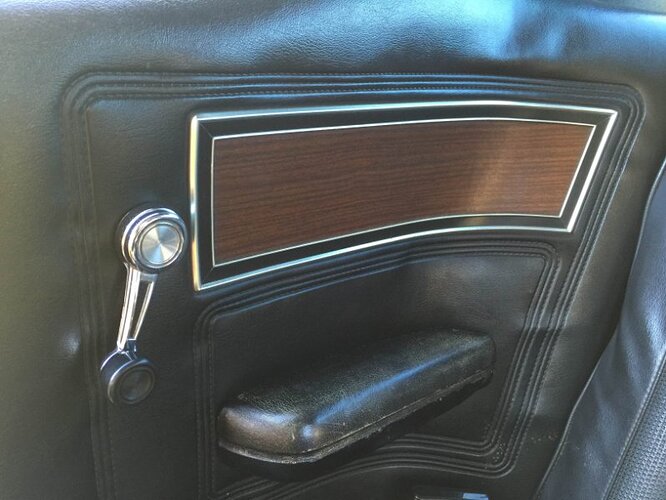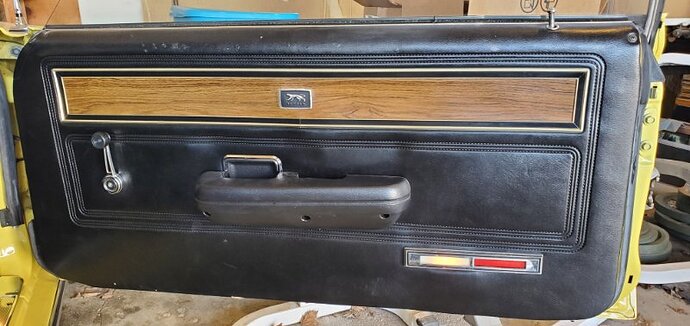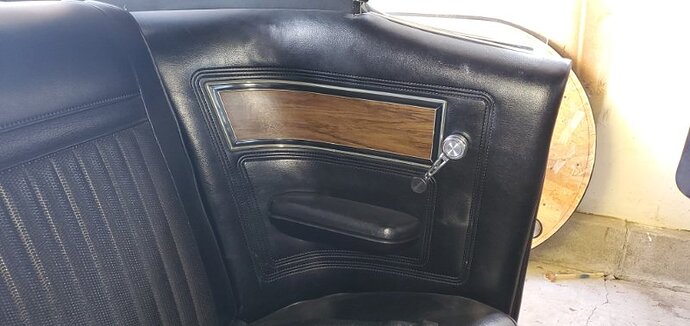I’ve asked and been asked this question before, several times: what’s the difference between 5A trim and 5A1 trim?
In the past I had dug into it a bit but was not able to find a clear answer, until now.
Kevin Marti describes the difference between the 5A and the 5A1 interior in his Mustang and Cougar Tag Book:
5A / 5A1 interior trim deviation = a deviation in the Door Panel and Interior Rear Quarter Trim Panels.
The number “1” indicates a deviation component that will not be serviced (i.e. the interior trim panel that has the deviation is not going to be an item that is regularly stocked for repair or replacement).
I have been told that the number “1” started use in January of 1969, but I’m not sure exactly where that info is from (possibly the Tag Book?). The Eliminator data that I have shows 5A1 Trim codes stop appearing around mid-April (my latest 5A1 door tag has a 17D date code).
In the case of a second letter, such as “A”, the letter would indicate a deviation component that IS going to be serviced (i.e. there will be identical components available in stock for service repairs).
While I do see additional letter “A” Trim codes appear on some Marti Reports and on some reproduction door tags (i.e. 5AA or 5BA), the Vehicle Order Codes listed on those Deluxe Reports do not show that additional “A”. Also, I have not found any 5AA trim codes recorded on original door tags, invoices or build sheets. This leads me to believe that the 5AA and 5BA trim codes may not have actually been used ~ at least not for Eliminators. If you have any original documentation that supports the use of 5AA or 5BA Trim codes I would love to see it.
Regarding what the Trim Deviation is, my previous understanding was that it was not related to the wood grain trim on the interior panels and that it was likely related to the grain / texture / thickness / “other detail” of the black vinyl used on the interior panels, or possibly some other component of those interior panels, such as batting used behind the vinyl. However, once I actually started comparing pictures (see examples below), it was easy to see that this was not the case. I have multiple examples of each style, but these are my best images. Maybe you guys already knew this difference, but I didn’t!
5A woodgrain example…
5A1 woodgrain example…
From what I’ve been told, the door tags were stamped on the line / at the factory to reflect any last minute changes. Sometimes the tag might show a different code than what ended up in the Ford database - so a car door tag might show 5A1 while a Marti Report shows 5A. I have several examples of this in my files.
Ok, let me know what you think.







